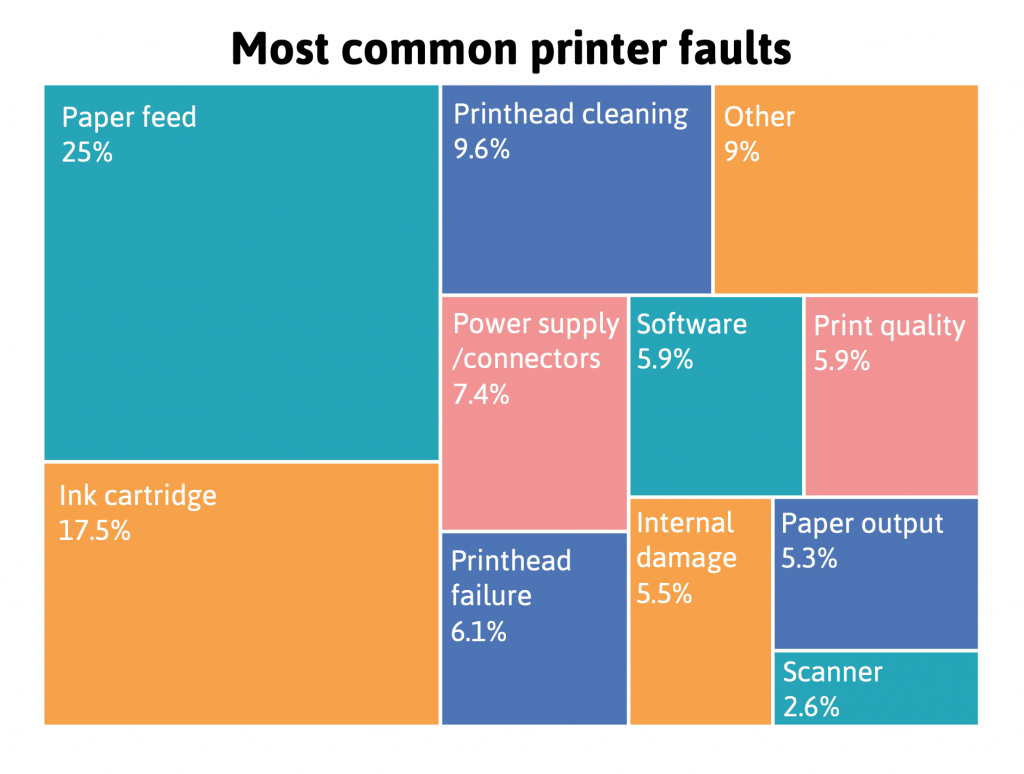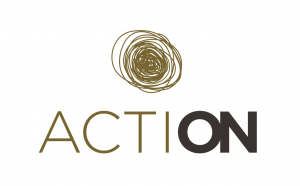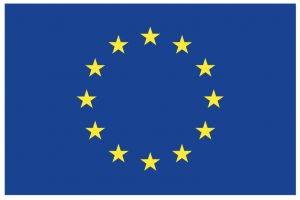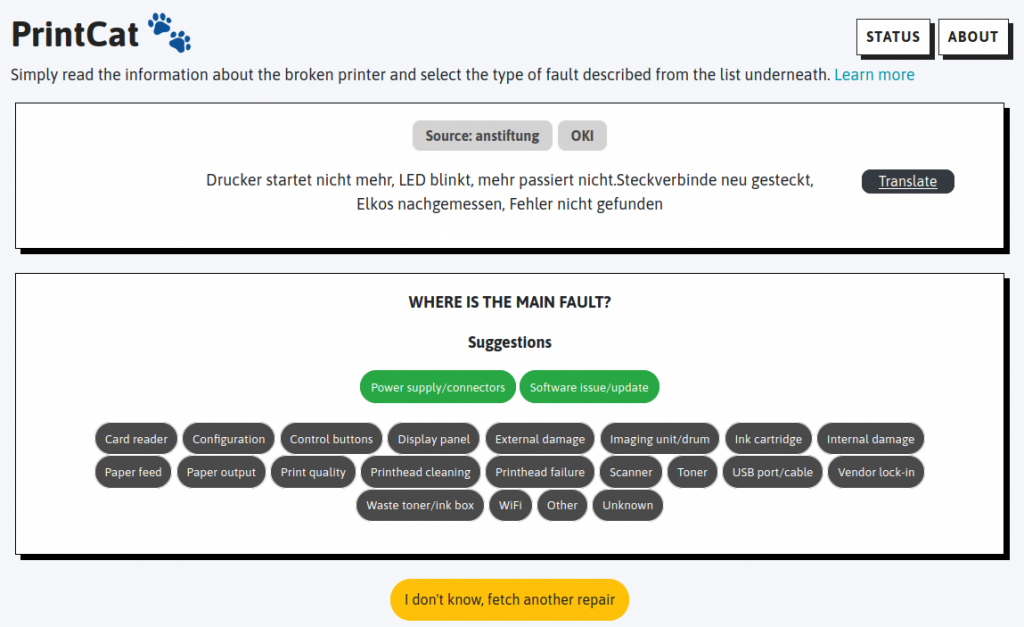Why do printers fail? What are the barriers to repairing them?
Data from the Open Repair Alliance, based on the analysis of over 800 repairs of printers at community repair events, shows that less than 40% of printers repairs are successful at these events. Analysis of the data shows the range of problems encountered by volunteers, as well as their level of success per type of fault. This provides a strong rationale for extending the availability of spare parts and repair information to end-users.
Repairs conducted at community repair events involve multiple fault types. While some of them are activities often related to maintenance (Paper feed 25%, Printhead cleaning 9.6%), others revolve around parts likely needing a replacement part (Ink cartridge 17.5%, Power supply/connectors 7.4%, Printhead failure 6.1%, internal damage 5.5%, paper output 5.3%).
The wide range of faults experienced on consumer-level devices brought to repair events, as well as the varying degree of success in tackling the faults, shows the need for much improved access to spare parts and repair information for both consumers and community repair initiatives.
Additionally, the data highlights the shortcomings of manufacturers’ approach. In the current draft of their “voluntary agreement” with the European Commission, manufacturers propose not to provide spare parts for printers whose value is less than 350eu. This approach would lead to making a significant portion of repairs impossible, and therefore drive premature obsolescence of these devices.
Currently, 80% of printers are replaced within the first three years after purchase1. Yet our data demonstrates strong demand for longer-lasting products; of the 309 printers where the device’s age was recorded, over 74% were at least 4 years old, indicating that many consumers want to use their printers for longer.
1 ECOS, “Comments on the proposed update to the industry voluntary agreement on imaging equipment”, 2021, available at: https://www.coolproducts.eu/wp-content/uploads/2021/07/ECOS-eNGO-comments-on-IE-VA-July-2021.pdf

Where does the data come from?
As part of their Data Workbench, Open Repair Alliance partner The Restart Project facilitated an online microtasking quest – PrintCat – where volunteer participants looked at Open Repair Alliance data on around 800 repair attempts of printers. The aim of these quests was to sort the records into buckets of fault “types”.
Community repair events are busy with volunteers concentrating their efforts on the people and the devices that turn up. The data that gets recorded by a fixer is their description of the situation at the time. Microtask participants would read this “problem” text and judge whether it fitted any of the fault “types” that were presented. Based on consensus of these opinions, the outcomes for the devices were assigned.
The data started as 987 records with the product category of “Printer/scanner” in the 2020-09 ORA data. After filtering out those with an empty “problem” statement, 831 remained and were included in the PrintCat quest. 771 of these records received a winning fault type during the PrintCat quest – that is, the fault type received either a majority of 2 out of a possible 3 opinions from quest participants, or received ‘split opinions’ which were subsequently adjudicated by members of the Restart team. Records that did not receive enough opinions for either a majority or adjudication at the time that the PrintCat quest closed are not included. 229 records received a fault type of ‘Unknown’, meaning a fault type could not be determined from the problem statement.
The fault types that were available to choose from, and their descriptions, are listed here: https://github.com/openrepair/data/blob/master/quests/printers/printcat_fault_types.csv.
Download the PrintCat data
You can download the outcome data from PrintCat here: https://github.com/openrepair/data/tree/master/quests/printers.
The full Open Repair Alliance dataset on which PrintCat was based is available here.
Support for this work

We are hugely grateful to to The ACTION (Participatory science toolkit against pollution) project for funding this work and for their support.

This project has received funding from the European Union’s Horizon 2020 research and innovation programme under grant agreement No 824603.
This blog post reflects the author’s views. The European Commission is not liable for any use that may be made of the information contained therein.
